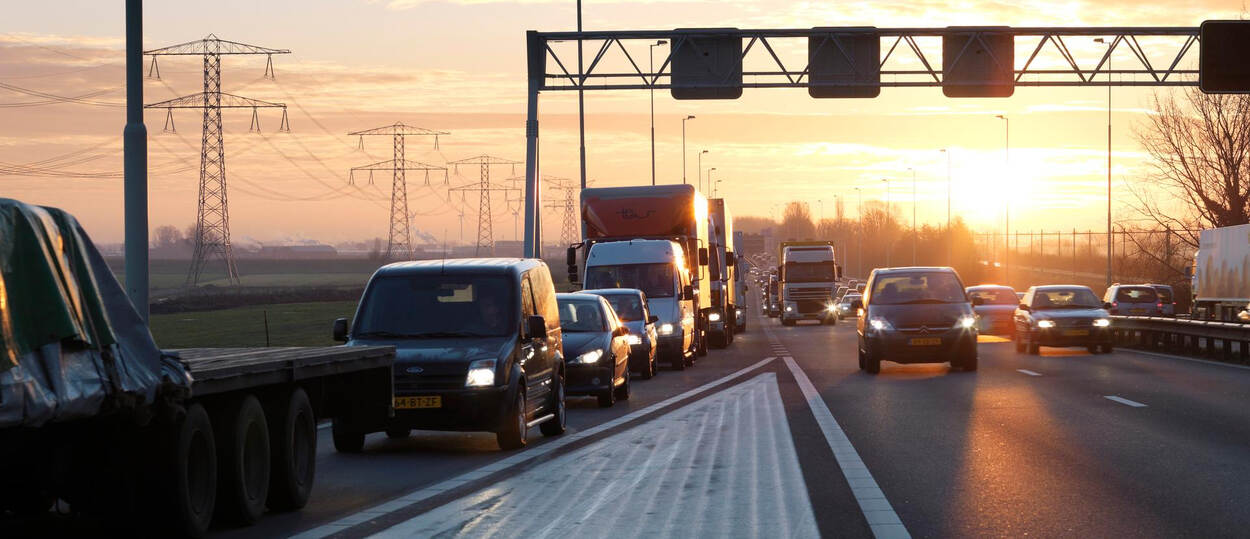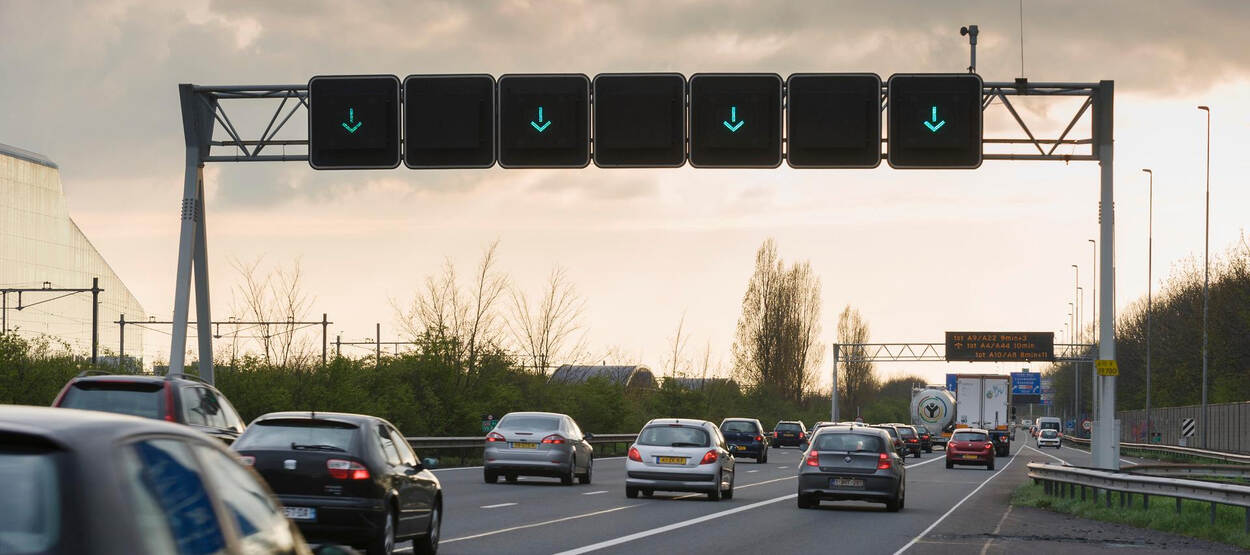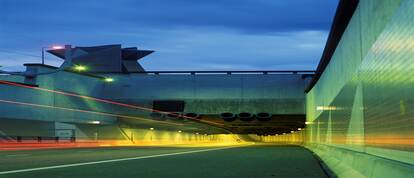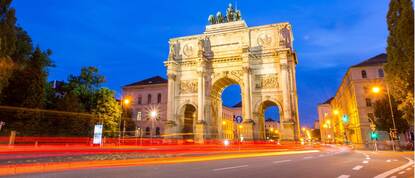
Throughout the project, the SOCRATES2.0 partners ensured strong interaction between SOCRATES.2.0 activities and relevant experts to bring strategic thinking expertise on new concepts for mobility and traffic management, but also provide complementary knowledge and experiences to the project.
Finalising the project, the Director Investment, Innovative & Sustainable Transport at the European Commission, a member of the SOCRATES2.0 Advisory Board, the chair of the TM2.0 platform and the head of the CEF Unit “South West Europe, BeNeLux + Innovation, ITS and RIS” at CINEA reviewed the results, placed them in the broader context of European policy goals, the mobility ecosystem and future scenarios of connected and automated driving and provided their findings.
Hereunder the SOCRATES2.0 partners proudly present these four essays as valuable additional context for the journey on discovering how to shape public - private cooperation in a future of interactive traffic management.
Author
Mr. Herald Ruijters
Director for Investment, Innovative & Sustainable Transport
European Commission, DG Move
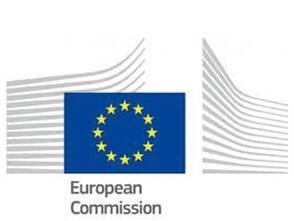
European Commission and SOCRATES2.0: Stepping stone to the future of mobility
The themes at the core of the work in SOCRATES2.0, “fast, safe, green”, are also at the heart of the European Commission’s policy work set by the Sustainable and Smart Mobility Strategy. The goals of alleviating congestion, reducing casualties on European roads and migrating towards sustainable ways of travel and transport are underpinned in the actions to be undertaken in the coming years as the strategy unfolds into the concrete initiatives.
The strategy’s objectives, sustainable, smart and resilient, with their respective international components, rely on digitalisation and cooperation between stakeholders to become a reality. SOCRATES2.0 has been exemplary in showing us the benefits of both: digitalisation as the driver for innovative solutions and public–private cooperation as the prerequisite for a successful outcome of the project.
This is also visible in the latest developments in the field of Intelligent Transport Systems (ITS), which is coming of age, reflected in the revisions of the related legislations. Advancing digitalisation by updating requirements on data types, quality, availability and geographical scope will serve mobility users through improved traffic and travel information services. In turn, these will give us less congestion, safer roads and more choice in terms of modes and routes.
'By acknowledging that public or private organisations cannot solve today’s problems in the mobility sector by themselves, space for exploring synergies and new roles has been created'
That is precisely why the experience in SOCRATES2.0 has been very valuable: the goal to leverage public–private opportunities in order to reach these objectives by providing interactive traffic management, allowing each actor to deliver according to their strengths, is something worth striving for in the broader field of ITS as well. By acknowledging that public or private organisations cannot solve today’s problems in the mobility sector by themselves, space for exploring synergies and new roles has been created through the cooperation framework delivered by the project. The experimentation with these new roles has been beneficial in understanding potential new business cases and coordinating responsibilities for private actors, while giving public authorities the chance to recalibrate their own roles in a more effective and efficient way. This will also help the European Commission in shaping appropriate and specific support through funding and legislation in the future.
The next decade is going to bring further (r)evolutions in the field of traffic management, with the worlds of different modes, stakeholders and communities integrating more and more into a single mobility system. The end user services and data feeds created in SOCRATES2.0 prove that this is indeed possible, bringing benefits to everyone involved, but most importantly setting the scene for digitalisation and cooperation as stepping stones to achieve this. I wish to thank all the partners involved in the project for their efforts, trust in each other and belief in the value of the lessons the project would bring to the sector.
Author
Michael L. Sena
Member of the SOCRATES2.0 Advisory Board
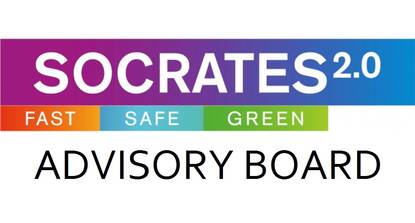
SOCRATES2.0
There is no question that SOCRATES2.0 has made an extremely significant contribution to the practice of cooperative and integrated traffic management. What is unique about SOCRATES2.0 compared to many multi-country intelligent transport system projects is that it was initiated and has been guided by two insights. The first is the understanding that traffic management as it has been designed and operated by public authorities is not working. Command and control of thousands of independent drivers who are attempting to optimise their individual journeys is a thankless and impossible task. Public authorities have not had the means to reach all drivers with command information, and when information is received by drivers, they must feel that what they are receiving will help them achieve their own goal - reaching their destination quickly and efficiently - and that their well-being will not be sacrificed for a greater good. The second insight is the acceptance that making traffic management work is not a matter of developing yet another technical solution, but of finding a way to create a workable method of cooperation between public road authorities who have useful static, temporal and real-time data and private companies manufacturing motorised road transport vehicles and delivering road-related services to those vehicles.
What I feel is the most important contribution that SOCRATES2.0 has made to the field of enabling the flow of motorised transport vehicles on roadways is that it has redefined the relationship between the road builders and the vehicle builders. They are not adversaries with conflicting objectives. Both are providing the means for people who drive, and who pay for the roads they are using, to achieve their objective of reaching their destinations safely and efficiently. It is only through cooperation between the road and vehicle builders that both the needs of the individual driver can be reconciled with the needs of all drivers, pedestrians, property owners and the environment. Road authorities, vehicle manufacturers and their service providers are all partners. They have different sources of funding and different business models, but their mission is the same: to enable safe, efficient and clean mobility.
'It is only through cooperation between the road and vehicle builders that both the needs of the individual driver can be reconciled with the needs of all drivers, pedestrians, property owners and the environment'
The SOCRATES2.0 project team determined that there was not a single approach to how public and private companies can interact. In some cases, it may be sufficient to deliver timely data to service providers about short-term roadworks or the temporary closing of a road. In other cases, service providers and public authorities may want to deliver the same messages on navigation systems and variable message signs. Also, there can be opportunities in which coordinated efforts of data exchange and information processing can lead to more optimum guidance and routing of traffic. Each of these cooperation approaches has different preconditions. Each of these approaches were put to the test in four cities and as much information as possible was collected given the extremely difficult restrictions caused by COVID-19 pandemic.
SOCRATES2.0 is an excellent new beginning. There must be a continuation with more vehicle manufacturers and service providers participating. The evaluation prepared by the project team is a perfect starting point for deciding how to proceed.
Author
Dr Johanna Tzanidaki
Co-Chair TM2.0 ERTICO Innovation Platform
Director Innovation and Deployment
ERTICO –ITS Europe
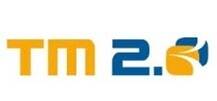
SOCRATES2.0 as the proof of concept of TM2.0
Most of the partners in the SOCRATES2.0 CEF-funded project, are also active in the TM2.0 ERTICO Innovation platform since its early days in 2014. The TM2.0 Platform aims to facilitate the evolution of traffic management towards an interactive process that involves the traffic management authorities, the service providers, the infrastructure and the vehicle itself. Having acknowledged that what hampered the consistency of traffic information on the road network was the inability of traffic stakeholders to work with each other on an equal footing, the TM2.0 concept aimed from the start at ensuring that all stakeholders involved in traffic could see the win(public sector)-win(private sector)-win(driver) in such a cooperation.
SOCRATES2.0 is seen as the TM2.0 proof of concept. It has also expanded and further developed the concept by adding a role for an intermediary, an entity that facilitates the exchange and availability of data, as well as trust among the stakeholders. The project has proven the viability of interactive traffic management and shown it is possible for public authorities to orchestrate the management of traffic by planning and justifying their decision-making within a continuous dialogue and exchange of information on set priorities with the private and public stakeholders in traffic. The TM2.0 principle of co-opetition, where service providers continue to compete in the market based on the quality of their traffic information services but agree to cooperate for the common benefit, as this is set by the public authorities, was put into practice in the SOCRATES2.0 pilot cities, where it has proven feasible. The TM2.0 principle of trust among competing but co-operating service providers who are also members of the TM2.0 Innovation Platform (i.e. HERE, TomTom, Be-Mobile, Technolution and BMW) has been used as a guiding value throughout the SOCRATES2.0 project. It has also been the main factor of its success.
The SOCRATES2.0 pilot schemes in Antwerp, Amsterdam, Munich and Copenhagen elevated the cooperation of public and traffic stakeholders from exchanging data towards creating a common situational picture and eventually resulting in coordinating actions that can potentially optimise the traffic network. They have focussed on the very essence of interactive traffic management. The SOCRATES2.0 project’s answer to this challenge and the cooperation of stakeholders who were made in the project responsible to co-create and co-opete in optimising the traffic flow, paves the way for a traffic management system that can also accommodate automated vehicles.
'The deployment of the SOCRATES2.0 Cooperation Framework and its three cooperation models can potentially lead to valuable insights on how to manage the CCAM domain and also environmental targets'
With increased automation forecasted to have a gradual but considerable impact on traffic over the next decades, the TM 2.0 concept that SOCRATES2.0 has proven and further evolved the close cooperation between public authorities and private traffic service providers (providers of traffic information and hosting services infrastructure). The deployment of the SOCRATES2.0 Cooperation Framework and its three cooperation models can potentially lead to valuable insights on how to manage the CCAM domain and also environmental targets.
A cooperation scheme aimed at aligning Operational Design Domains (ODDs) and Infrastructure Support Levels for Automated Driving (ISADs) as part of handling CCAM in mixed traffic seems to be a possible prospect based on the outcomes of SOCRATES2.0. More to that, the attainment of the climate targets by European member states, to which both public and private stakeholders are asked to adhere, can be a driving force for the scalability of the operational deployment of the concept of TM2.0 and SOCRATES2.0. The Green Deal goals can only be achieved if all stakeholders cooperate. The insights gained by this project are proof that this is possible.
More work should follow the success of this project, so that the concept of the Intermediary that ensures the accessibility and availability of data exchanged among partners in real business can be established. At the same time viable business models for all actors involved need to be better defined, outside the piloting environment of projects. We expect the legacy of SOCRATES2.0 to be the adoption of its cooperation framework in a scalable scheme in Europe and around the world, where more and more traffic management stakeholders will assume the responsibility of acting towards the benefit of all in the traffic management value chain.
Author
Mr. Christian Faure
Head of the CEF Unit “South West Europe, BeNeLux + Innovation, ITS and RIS”
CINEA

SOCRATES 2.0 – Epilogue
The development and deployment of Intelligent Transport Systems (ITS) is one of the key priorities of the European Commission to help promoting transport efficiency, boost road safety and enhance greener and smarter mobility. In particular these last two points – making road transport smarter and greener – will be of key importance in achieving the ambitious objectives laid out by the European Commission in its European Green Deal.
CINEA (European Climate, Infrastructure and Environment Executive Agency) has a key role in supporting the European Green Deal, the roadmap for making the EU’s economy sustainable and achieve climate neutrality by 2050. The Agency will channel European Union funding to ITS projects through the Connecting Europe Facility (CEF) Programme. Since 2014, the CEF programme has already provided over €500 million of EU funding to ITS projects, matching investments of more than €1.3 billion.
The SOCRATES 2.0 initiative was one of the beneficiaries of CEF funding. The project improved traffic by promoting a continuous deployment of European-wide traffic management measures and mobile/in-car services for road users, while supporting cleaner, efficient and safer flows. This was possible thanks to a solid cooperation of road authorities, service providers and car manufacturers in Europe.
' The Agency will collaborate with all stakeholders in the road transport sector (and beyond) to ensure that ITS solutions are rolled out quickly. These solutions and upgrades will hail a new era for the road transport sector, which will immediately benefit citizens and businesses'
CINEA, via the CEF programme, will co-finance, between now and 2027, the construction and upgrade of vital infrastructure, and encourage the rollout of smarter and safer solutions for transport. The Agency will collaborate with all stakeholders in the road transport sector (and beyond) to ensure that ITS solutions are rolled out quickly. These solutions and upgrades will hail a new era for the road transport sector, which will immediately benefit citizens and businesses.
On behalf of all CINEA colleagues working on ITS, at CINEA, I would like to thank all stakeholders involved in SOCRATES 2.0 for their commitment, and for their contribution to make European Road Networks connected, greener and smarter.
